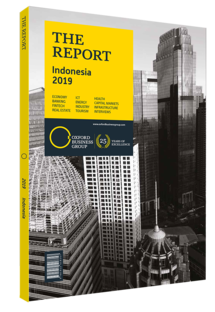Ignasius Jonan, Minister of Energy and Natural Resources: Interview

Interview: Ignasius Jonan
How can renewable energy companies participate in the diversification of energy production?
IGNASIUS JONAN: Oil and gas companies usually raise their own capital. This makes it easier for them to operate in Indonesia than renewable energy companies, which have to secure equity from local banks that charge high interest rates. Lower interest rates have to be established to allow local companies – and the renewables segment as a whole – to contribute more to the diversification of Indonesia’s energy mix. Indonesia seeks to attain GDP growth of 5-6% and the country has to be able to provide affordable electricity to achieve this.
In this regard, coal-fired power plants stand out as the most affordable energy source. It has always been challenging to strike a balance between economic growth and environmental sustainability in this regard. Since Indonesia will remain dependent on coal, we aim to push new independent power producers to introduce clean coal technology. We are also looking to substitute or combine diesel power plants with renewables to form hybrid plants, as long as the tariff introduced is still affordable.
Moreover, gas resources constitute a cleaner alternative to coal, though increasing the share of this resource would require the discovery of vast new gas fields. In terms of energy security, current oil production remains at less than 800,000 barrels per day. Energy demand keeps increasing, yet our nation’s supply remains stagnant. This presents us with a myriad of challenges as this supply-demand gap will grow in the foreseeable future if we do not discover large oil fields, meaning we will remain dependent on oil from foreign countries.
What is your assessment of Indonesia’s current domestic production capacity?
JONAN: Indonesia’s current production capacities remain low, largely due to low oil prices since 2015, although exploration projects have certainly picked up in recent years. To ensure that domestic energy needs are met, a number of oil and gas projects will benefit from considerable development in 2019.
For example, the East Java-based Jambaran-Tiung Biru project is expected to start drilling activities in the second quarter. This project is cost optimised so that PLN can be the sole off-taker of the gas and is expected to lower costs by some $500m. Another project that is poised to undergo progress in the near term is the Masela block in the Arafura Sea, where upstream oil and gas regulator SKK Migas is working to evaluate the block.
To what extent are Indonesia’s transmission and distribution lines prepared for the expected increase in power consumption?
JONAN: The key here is whether Indonesia has a sufficient reserve margin, as power consumption is expected to increase by 7-8% annually until 2026. The Electricity Supply Business Plan outlines a method for analysing how effectively this is being achieved by Perusahaan Listrik Negara (PLN), the state-owned transmission system operator and distributor that is responsible for the majority of the country’s electricity generation. The plan states that after the building of a new power plant is complete, transmission lines ought to be ready before the power plant starts operating.
By 2027 the reserve margin is forecast to be 30%, which is a clear signal to investors that Indonesia boasts a healthy reserve margin. However, various challenges remain, given that the rollout of transmission and distribution infrastructure has proven difficult in some of the more remote parts of the archipelago. Nevertheless, various exploration and development projects have been prioritised to ensure that foreign energy imports do not substantially widen Indonesia’s current account deficit.
You have reached the limit of premium articles you can view for free.
Choose from the options below to purchase print or digital editions of our Reports. You can also purchase a website subscription giving you unlimited access to all of our Reports online for 12 months.
If you have already purchased this Report or have a website subscription, please login to continue.

